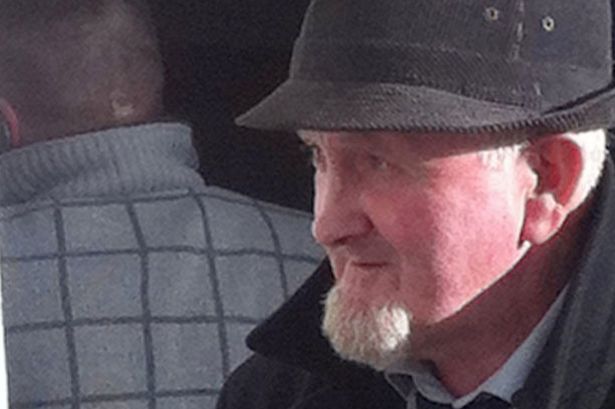Well-known Churchill man Seamus Doherty died as a result of an unlawful killing in 2012, his inquest has found.
A jury of four women and two men delivered the finding at the inquest into the death of the 67-year-old, who was found dead in the bathroom of his home at Drumacanoo on June 17, 2012.
The inquest, which was held over three days at Letterkenny Courthouse, concluded this evening.
While Gardai initially treated it as a sudden death, but a post-mortem showed that Mr Doherty had been strangled to death.
The jury unanimously agreed that Mr Doherty had been the victim of an unlawful killing.
The jury also unanimous agreed that the cause of his death was cerebral hypoxia as a result of asphyxia caused by compression of the neck.
Family members of the late Mr Doherty, who were present for the duration of the inquest, wept as the findings were read.
Coroner Dr Denis McCauley apologised for the delay of ‘quite a long time’ endured by the Doherty family.
“In 2012, you lost your father to an unlawful killing,” Dr McCauley said. “A lot of time has passed between then and now and other procedures have taken place at other venues.”
Dr McCauley complimented the diligence of the jury, who also issued six riders, which largely focussed on the investigation conducted and the procedures followed by An Garda Siochana.
The former State Pathologist, Professor Marie Cassidy, appeared via video link and told how she conducted a post-mortem on the body of Mr Doherty on June 19, 2012.
He examination showed evidence of blunt-force trauma and some minor injuries on his hand and face. There was extensive bruising on the left-hand side of his face, with scratches and abrasions to his neck and face.
There were fingernail scratches from his left ear down to his collarbone. Head injuries, Professor Cassidy said, could have been caused by punches, kicks or by his head striking against a solid surface.
The most significant injuries were on Mr Doherty’s neck. These injuries showed that forceful pressure was applied to his neck. The scratches suggested an attempt at manual strangulation and Professor Cassidy felt this was ‘forceful compression’ for a sustained period. This would have subjected Mr Doherty to ‘a profound episode of a lack of oxygen’.
Professor Cassidy was only alerted on June 18, 2012, when a local pathologist declined to examine the body after noticing some injuries and realising there were some inconsistencies in accounts that had been given.
The now-retired Detective Inspector Pat O’Donnell was appointed as the chief investigating officer in the case on June 19, 2012. He accepted the view of Mr Barra McGrory QC, for the children of Mr Doherty, that he could have been appointed ‘sooner’.
Since then, 333 people have been spoken to and 628 lines of enquiry followed, he told the inquest.
Asked if it was a regret of Gardai that no-one had been convicted, Detective Inspector O’Donnell said: “I would like to have seen the perpetrator prosecuted.”
A prosecution was brought in the case, after an oral testimony of an individual but, following the death of that witness, the DPP withdrew the case.
Some 28 boxes of paperwork and 175 exhibits have been garnered and the case is still open, he said.
Superintendent Michael Finan told the third day of the inquest that he received a call at 6.45am from Sergeant Martin Rochford informing him of the incident.
Superintendent Finan told how he spoke to two scenes of crime officers, Garda Shaun McLaughlin and Garda Michael Farren, who, he said, ‘seemed satisfied that there was no foul play’.
Superintendent Finan said he did not have enough evidence to designate the house as a crime scene.
“I don’t think there was enough evidence to decide that a murder had occurred,” he said.
At 9.18am on June 18, 2012, Superintendent Finan spoke to Dr Gerry O’Dowd, who was the pathologist on call, said he was not willing to carry out a postmortem examination on Mr Doherty’s body as he was concerned at marks on his head and neck.
Detective Garda Bosco Gallagher was dispatched to interview two persons who were in the house on the night in question, Samuel James ‘Jim’ Clarke and John McArt.
In the afternoon of June 18, 2012, Dr O’Dowd and Superintendent Finan spoke again and agreed that they needed to call in the State pathologist.
In the company of Detective Garda Bosco Gallagher, who accompanied the remains of Mr Doherty to the mortuary at Letterkenny hospital, Dr O’Dowd looked at the body of the deceased.
When the mortuary technician removed a drape in order for Detective Garda Gallagher to identify Mr Doherty, Dr O’Dowd noticed some marks, including ‘unusual injuries to both ear lobes’, which he deduced were ‘virtually impossible’ to have been caused accidentally.
Dr O’Dowd also raised concerns about ‘inconsistencies’ in the timeline of events he had been given.
“We had pieces of a jigsaw, but they weren’t fitting together.”
Superintendent Finan said the procedure now is that the State pathologist is brought in immediately where there are any suspicious circumstances.
Mr McGrory pointed out that the crime scene manual in place in 2012 said that the State pathologist should be sought ‘in any case where there are suspicious circumstances’.
Superintendent Finan said: “In this case, we did an assessment in relation to a suspicious death and, from that assessment, the suspicion went out of the death.”
Superintended Finan defended the fact that the four other persons who were in the house with Mr Doherty were spoken to by Gardai in the presence of each other.
“It sounded like a chaotic situation so I can understand why they were interviewed the way they were,” he said.
Mr McGrory said ‘it doesn’t take Sherlock Holmes to come to the conclusion’ that, had there been unlawful activity, it had to have been carried out by someone who had been present.
Superintendent Finan said he didn’t believe the first responding Gardai suspected a murder. “It is a big step up from a suspicious death to a murder,” he said.
In response to Ms Miriam Reilly SC, for an Garda Siochana, Superintendent Finan said the suspicions of Gardai ‘lessened’ as the morning wore on.
Ms Anne Doherty called 999 at 1.5am to say that her husband had died.
Earlier that day, Ms Doherty told how her husband had appeared ‘very confused’
In the afternoon prior to Mr Doherty’s death, Samuel James ‘Jim’ Clarke – who had arrived initially to deliver a pony which Mr Doherty was buying from another man, John McArt – took Mr Doherty to Letterkenny hospital, seeking to have him assessed for admission into the psychiatric unit. Mr Doherty refused admission and returned home.
Mr Clarke, Mr McArt and Ms Martina Spokes returned to the Doherty household at around 9.30pm. Mr McArt and Ms Spokes left again to go to an off-licence before returning at midnight.
Differing accounts were given about how the body of Mr Doherty was initially discovered.
Ms Doherty and Ms Spokes said they heard a bang and Ms Doherty went to the bathroom, where she found her deceased husband.
A Garda, who went to the Doherty household to relieve a colleague tasked with preserving the scene, admitted that she erred in allowing a man who was in the house on the night Mr Doherty died to remove his vehicle from the yard.
Garda Caroline Carty told the inquest that she was unaware that the designated scene included the entire curtilage of the site of the house.
“I was of the assumption that the house was the scene,” she said as she explained how she gave Mr Clarke permission to take his Hilux jeep.
Garda Carty told how she only became aware of the error the following day when reading a report which had been typed by Garda Daniel Costello at Milford Garda Station.
“I nearly died myself,” she said.
Retired Sergeant Martin Rochford told the inquest how he attended the scene after receiving a telephone call to notify him of the discovery of Mr Doherty’s body.
Garda Daniel Costello was placed in charge of the scene and Mr Clarke was told that Gardai would be keeping his jeep at the scene and other Gardai took Mr Clarke, Mr McArt and Ms Spokes to Mr Clarke’s house in Raphoe.
“The step of going from witnesses to suspects was something we couldn’t make on the evidence we had,” Sergeant Rochford said.
“If we could have made that jump from witness to suspect, it would have meant arresting all of the people in the house. The evidence wasn’t there. It was a balancing act.”
Mr McGrory asked why the individuals were not taken away from each other, out of earshot, to be spoken to.
“We didn’t know what had happened,” Sergeant Rochford said, later adding that he was ‘happy with the enquiries made’.
Garda Shaun McLaughlin, a scenes of crime officer, told the inquest how saw Mr Doherty laying in close to the foetal position with a pool of blood underneath his head.
He saw the lid of the cistern resting on the toilet seat and noticed the ballcock was missing. There was a towel on the toilet bowl and a wet, saturated towel on the floor.
Four bed towels were in the sink and there was broken glass, which appeared to be from a drinking glass.
In the kitchen- living area, he saw an almost empty bottle of Power’s and an empty bottle of Hennessy.
A mobile phone found under the wash basket was later discovered to be that of Mr Clarke.
Scenes of crime officer Garda Michael Farren said he believed that it was ‘perfectly logical ‘ to conclude that Mr Doherty had fallen.
“The whole appearance of the bathroom suggested that he fell,” he said. “My conclusion was that he had a medical problem; there was no allegation or evidence of anything else.”
This view was altered upon the post-mortem conducted by Professor Cassidy.
The jury foreman, Inspector Seamus McGonagle and legal representatives all passed on condolences to the family of Mr Doherty.








